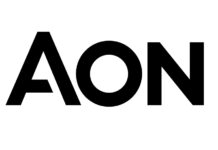With a central focus on human safety, high quality standards for drug products are upheld worldwide through various drug agencies. In order to ensure that drug products intended for human use fulfil the safety needs of patients, regulatory approval must be granted before they make it to market.
In this article Pamela Ventura, Regulatory Affairs Director, at Recipharm discusses the regulatory documentation on drug substances required to support product authorisation applications both during development and at market approval stage. She also explores the discrepancies across markets and what this means for drug developers and manufacturers.
Regulatory documentation: an overview
Active pharmaceutical ingredients (APIs) are critical to the drug approval process in every region across the world. With APIs being the compounds that generate activity and effectiveness of all drugs, they are subject to tough scrutiny during the approval processes of pharmaceutical products. Drug substance development and production is the foundation for which the development of pharmaceutical products is built. Regulatory documentation on APIsis aimed at ensuring drug substance batches are consistent in quality so that the quality of the drug product is also consistent.
Medicinal products can enter the market once a marketing authorisation has been granted by the relevant regulatory authorities. Marketing authorisation for a drug product must demonstrate robust evidence of efficacy, safety and quality of the drug product, which will be showcased in quality documentation on the active substance.
The guidelines governed by the European Medicines Agency (EMA), US Food and Drug Administration (US FDA), Japanese Pharmaceuticals and Medical Devices Agency (PMDA) and The International Council for Harmonisation of Technical Requirements for Pharmaceuticals for Human Use (ICH) all enable the production of high-quality pharmaceuticals, whilst also ensuring the safety needs of patients are met.
While all regions have aligned procedures in place to ensure the safety and efficacy of medicinal products, and a standardised set of information is required to support the quality of the APIs, they may adopt different procedures for the filing of regulatory information on APIs in the context of a registration dossier. Drug substance information will usually be placed in the section 3.2.S of the registration dossier of a drug product in an application or in a drug master file (DMF).
The Drug Master File
A DMF is a common procedure used worldwide to provide regulatory information on APIs where there is a matter of confidentiality between the active substance manufacturer
and the marketing authorisation applicant. The confidential document is submitted by API manufacturers at their discretion to health authorities of the intended market. There is no legal or regulatory requirement to file a DMF. Within the document, detailed information on the chemistry, manufacturing and controls of the API is included. There is also information relating to facilities, processes, packaging and storing ofthe drug substance.
Although the procedure is upheld across the world, there are disparities in the ways the file is compiled and submitted. This can be challenging for global companies to handle in an efficient way.As an example,US-DMF and EU-DMF procedures are described below:
In the US
In the US market, several types of DMFs are allowed, not only for APIs. The content enclosed within the US- DMF is highly confidential, meaning the file needs to be submitted to the US FDA solely by the API manufacturer. The applicant is therefore required to only refer to the document in their application and provide the “letter of authorisation” in order to authorise the FDA to refer to the DMF for that specific application.
Following submission, the DMF will undergo an administrative review. If the DMF is successful, the technical content in connection with the submission is then made available for review.
In cases where the FDA reviewers identify deficiencies in the information provided in the DMF, a letter describing the deficiencies will be issued to the holder. The FDA will also notify the entity relying on the information to let them know that additional information is required in order to support the DMF. While the general subject of the deficiency is identified, the details of the deficiency are disclosed only to the DMF holder.
Furthermore, the US FDA requires all foreign firms conducting business under the FDA umbrella to appoint a U.S. agent to act as an intermediary between the FDA and foreign firms. As such, US agent information must be included in all DMF submissions to the FDA and any updates on the US agent’s contact information should be submitted too.
In Europe
In the EU, the information in the Active Substance Master File(ASMF) is divided into two separate parts: the applicant’s part (AP) or open part and the restricted part (RP), otherwise referred to as closed part. The AP includes information regarded as non-confidential and is to be disclosed to the applicant/ MA holder whereas the information in the RP is considered confidential. However, the AP is nevertheless a confidential document that cannot be submitted by any individual to third parties without gaining written consent from the ASMF holder. The RP document details the remaining information needed, such as the individual steps of the manufacturing method and the quality control (QC) during the manufacture of the active substance.
The primary aim of the ASMF procedure is to protect the valuable information on the manufacturing of an active substance, while at the same time allowing the marketing authorisation applicant (MAA) to take full accountability for the quality of the active substance used in their medicinal product. National Competent Authorities are in fact
given full access via letter of access to complete the relevant information required for the evaluation of the suitability of the use of the API in the medicinal product.
Drug substance regulatory documentation: key challenges
Control strategy and impurity profiling
Control strategy of an APIis based on the identification of critical quality attributes (CQA) and is key to the regulatory success of drug substance documentation. A CQA is a physical, chemical, biological or microbiological property or characteristic that should fit within the appropriate limit, range or distribution to ensure the desired product quality. Potential drug substance CQAs are used to guide process development.
During manufacturing process development for drug substances, the primary aim is to establish a commercial manufacturing process that can consistently produce high-quality drug substance.
Drug substance CQAs typically include properties or characteristics that impact identity, purity, biological activity and stability.
In order to attain successful regulatory approval of control strategy, a comprehensive understanding of the product’s characteristics and knowledge of all required manufacturing steps must be demonstrated. The approval is also based on the availability of suitable analytical methods to ensure the appropriate control of all potential impurities – including degradation products.
In recent years, there has been a growing interest in impurity profiling within the pharmaceutical industry. Following the recognition that trace level impurities can adversely affect both the safety and efficacy of the drug product, impurity profiling has subsequently gained significance in pharmaceutical product development. Impurities may develop during manufacture and remain at constant levels thereafter or may be formed during the storage of the API or during the storage of the finished product.
The presence of these chemicals has the potential to affect the efficacy and safety of pharmaceutical products. As there is a possibility of mutagenic or teratogenic impurities forming, stringent measures are in place to control the level of impurities present in drug substances and drug products. ICH guidelines provide a comprehensive framework on impurities, which helps pharmaceutical companies to produce drug products with minimal impurity contentin particular concerning toxic impurities.
Regulatory starting materials (RSM)
As an extension of tighter control on impurities in drug substances sits the prominent regulatory topic that is starting materials used in drug substance synthesis. Companies should document the rationale for the point at which production of the API begins. For synthetic processes, this is the point at which API RSMs are enteredinto the process.
According to the ICH Q11 guidelines, starting materials must be defined and have a justified selection during drug synthesis development. It’s essential that drug substance syntheses are performed under Good Manufacturing Practice(GMP) conditions from the very first use of a defined starting material. In the EMA’s guidelines, examples of critical manufacturing steps that should be performed under GMP are outlined, such as those
involving the formation and/or purge of impurities, steps requiring careful control of process parameters and steps that introduce key structural features of the active substance. Other examples include steps that use or generate genotoxic compounds, complex chemical transformations and the final purification step.
In order to fulfil regulatory and quality requirements, manufacturers of the starting materials must be named in the dossier along with the synthesis pathway. The synthesis pathway needs to specify all steps necessary to unambiguously clarify the formation of the relevant structural core elements and the origin of potential impurities. In addition to this, the selection of RSMs and justifications of their designation in the supply chain has become a central focus as a measure of mitigating regulatory risks. It also helps to prevent unexpected increases of cost, especially during the transition from clinical to commercial supply chain.
In fact, it should not be assumed that the RSM used for the production of drug substance throughout clinical trial studies, and clinical trial applications, will be granted approval in the final marketing application without the involvement of further justification. Typically, regulatory agencies don’t challenge RSM designations in clinical trial applications in a bid to avoid impeding clinical development. Agenciesare therefore unlikely to reject the proposed RSM designations in the clinical trial application, unless the GMP portion of the API process does not show any bond-making reactions other than purification steps. As the expectations change when sponsors transition from clinical to commercial supply chain, the sponsor should prepare to provide a rationale and evidence in support of the RSM designation.
When the marketing application is submitted, the sponsor will have validated the production processes of the drug substance along with the finished product. If the regulatory agency fails to accept the proposed RSM designation at this advanced stage of development, the entire supply chain that stems from this RSM is essentially invalidated. To this end, the sponsor is likely to experience lengthy delays to address RSM designation issues before the marketing application is approved.
The rejection of RSM designation can result in two different scenarios. In cases where the RSM was produced at a non-GMP plant, the sponsor will need to transfer production to a GMP plant in a very limited timeframe – particularly in cases where the sponsor receives news of the objection during the marketing application review period. This can be vital to the existing stock levels of drug substance and/or drug product, due to the fact the manufacturing site would not be the same as in the final application. However, if the RSM is rejected at a GMP plant, it is sufficient to retroactively valid the RSM process at the same
manufacturing site. This means that commercial inventory can be retained, including all drug substance and formulated batches derived from this RSM, due to the ability to use the same equipment and produce on the same scale.
Regulatory requirements for drug substance in clinical trials
Approval is needed for drug substances used in clinical trials during product development. However, the requirements for a clinical trial dossier differ from a marketing authorisation dossier.
While the goal of the latter is to maintain a consistent product quality for widespread patient use, the information provided for clinical trials should focus on the risk of use in a
controlled and specific context. Clinical trials should specifically consider the nature of a product, the clinical phase, patient population and the severity of an illness.
For quality of drug substances to be used in clinical trial products, reference to the European Pharmacopoeia (Ph. Eur.), the Pharmacopoeia of an EU Member State, the United States Pharmacopoeia (USP) or the Japanese Pharmacopoeia (JP) is acceptable,whereas the suitability of the referenced monograph to adequately control the quality of the active substance will need to be demonstrated by either the applicant or the sponsor.
In other cases, information on the synthesis of the drug substance, including reagents, solvents, catalysts and processing aids, along with anything that may potentially impact the safety of use for the material, should be provided in a clinical trial dossier.
Regulations grade the nature of quality information required on drug substances as drug development progresses through clinical trials.A sufficient amount of information needs to be submitted at each phase of the investigation in order to assure the identification and profile of the investigational drug. For example, the information required for drug substance in clinical trial applications includes description and characterisation, manufacturer and general method of preparation/ synthesis. Other information includes product specification, batch analysis data for clinical trial batch and stability (through end of clinical trial). However, the quantity of information required varies with the phase of investigation, the proposed duration, the dosage form and the amount of information readily available.
Final thought
High standards are in place across the world to ensure the safety and efficacy of drug products through various drug agencies.APIs are the compounds that generate activity and effectiveness of all drugs, and consequently their quality documentation is subject to tough scrutiny during the approval processes of pharmaceutical products.
While the quality of drugs is secured worldwide, regulatory documentation procedures for the filing of information on APIs in the context of a registration dossier differs from region to region. This can make navigating the regulatory requirements a complex process, making it important to take the time to understand the nuances and prepare for the potential challenges.






















